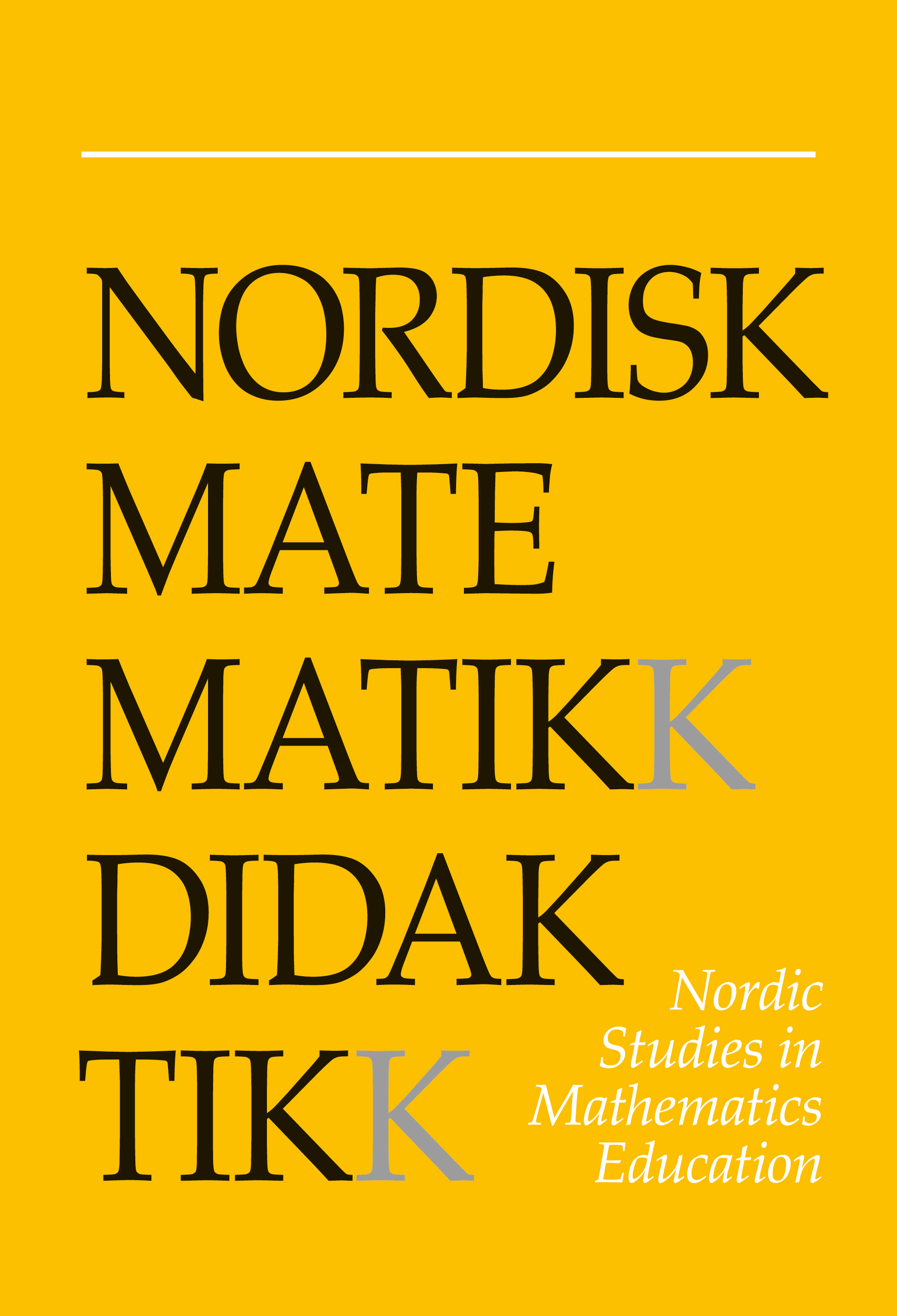Mathematics teachers’ initial implementation of a digital tool package
DOI:
https://doi.org/10.7146/nomad.v21i1.148716Abstract
The study reported in this paper was situated within developmental research and concerns teachers’ initial implementation of a digital tool in mathematics teaching. The paper illuminates two types of implementation processes, and takes an activity theory perspective in the discussion of reasons and the types of issues experienced and addressed in the implementation processes. Using activity theory parlance it is argued that although the teachers appeared to have rather similar objects for the implementation, there were great differences in teachers’ goals and the kinds of issues dealt with in the implementation processes. The schools’ organisation, internal collaboration within each school and how the external requirements for mathematics teaching, such as a curriculum and examination standards, were approached, played a significant role in the different implementation processes.
References
Assude, T. (2005). Time management in the work economy of a class, a case study: integration of Cabri in primary school mathematics teaching. Educational Studies in Mathematics, 59, 183-203. https://doi.org/10.1007/s10649-005-5888-0
Barzel, B. (2007). "New technology? New ways of teaching - no time left for that!". The International Journal for Technology in Mathematics Education, 14, 77-86.
Berry, J. S., Graham, T., Honey, S. & Headlam, C. (2007). A case study of the issues arising when teachers adopt the use of a new form of technology in their teaching for the first time. The International Journal for Technology in Mathematics Education, 14, 150-160.
Cole, M. (1996). Cultural psychology: a once and future discipline. Cambridge: The Belknap Press.
Crisan, C., Lerman, S. & Winbourne, P. (2007). Mathematics and ICT: a framework for conceptualising secondary school mathematics teachers' classroom practices. Technology, Pedagogy and Education, 16, 21-39. https://doi.org/10.1080/14759390601167991
Engeström, Y. (1999). Activity theory and individual and social trans- formations. In Y. Engeström, R. L. Punamäki-Gitai & R. Miettinen (Eds.), Perspectives on activity theory (pp. 19-38). Cambridge University Press. https://doi.org/10.1017/CBO9780511812774.003
Erfjord, I. (2011). Teachers' design and use of worksheets for mathematics teaching. In G. H. Gunnarsdóttir et al. (Eds.), Proceedings of NORMA 11: the sixth Nordic Conference on Mathematics Education (pp. 237-246). Reykjavik: University of Iceland Press.
Freudenthal, H. (1991). Revisiting mathematics education: China lectures. Dordrecht: Kluwer Academic Publishers.
Goos, M. (2005). A sociocultural analysis of the development of pre-service and beginning teachers' pedagogical identities as users of technology. Journal of Mathematics Teacher Education, 8, 35-59. https://doi.org/10.1007/s10857-005-0457-0
Hals, S. (2010). IKT i matematikkopplæringen - tidstjuv eller tryllemiddel? En studie av faktorer som kan påvirke bruken av IKT generelt og GeoGebra spesielt, hos lærere og elever på 10. og 11. årstrinn (Master thesis in mathematics didactics). Kristiansand: University of Agder.
Kaptelinin, V. (1996). Activity theory: implications for human-computer interaction. In B. A. Nardi (Ed.), Context and consciousness: activity theory and human-computer interaction (pp. 103-116). Cambridge: MIT Press. https://doi.org/10.7551/mitpress/2137.003.0009
Leont'ev, A. N. (1978). Activity, consciousness, and personality. Englewood Cliffs: Prentice-Hall.
Leont'ev, A. N. (1981). The problem of activity in psychology. In J. V. Wertsch (Ed.), The concept of activity in Soviet psychology (pp. 37-71). Armonk: M.E. Sharpe.
Lim, C. P. & Hang, D. (2003). An activity theory approach to research of ICT integration in Singapore schools. Computers & Education, 41, 49-63. https://doi.org/10.1016/S0360-1315(03)00015-0
Russell, G. & Bradley, G. (1997). Teachers' computer anxiety: implications for professional development. Education and Information Technologies, 2, 17-30. https://doi.org/10.1023/A:1018680322904
Ruthven, K., Hennessy, S. & Deaney, R.. (2008). Constructions of dynamic geometry: a study of the interpretative flexibility of educational software in classroom practice. Computers & Education, 51, 297-317. https://doi.org/10.1016/j.compedu.2007.05.013
Tondeur, J., Keer, H. van, Braak, J. van & Valcke, M. (2008). ICT integration in the classroom: challenging the potential of a school policy. Computers & Education, 51, 212-237. https://doi.org/10.1016/j.compedu.2007.05.003
Wagner, J. (1997). The unavoidable intervention of educational research: a framework for reconsidering research-practitioner cooperation. Educational Researcher, 26, 13-22. https://doi.org/10.3102/0013189X026007013
Yin, R. (2003). Case study research: design and methods (3rd ed.). Thousand Oaks: Sage Publications.
Downloads
Published
How to Cite
Issue
Section
License

This work is licensed under a Creative Commons Attribution-NonCommercial-ShareAlike 4.0 International License.



